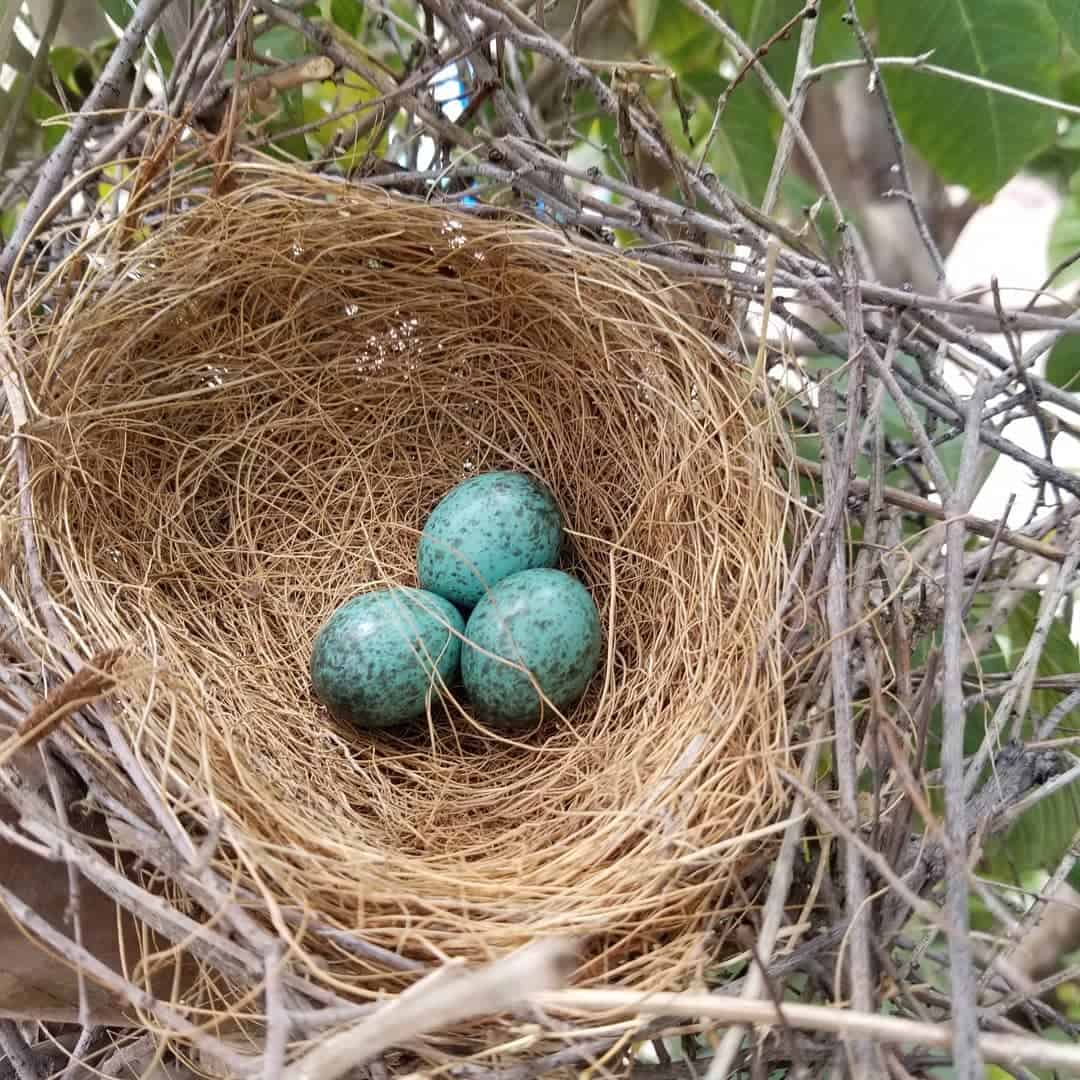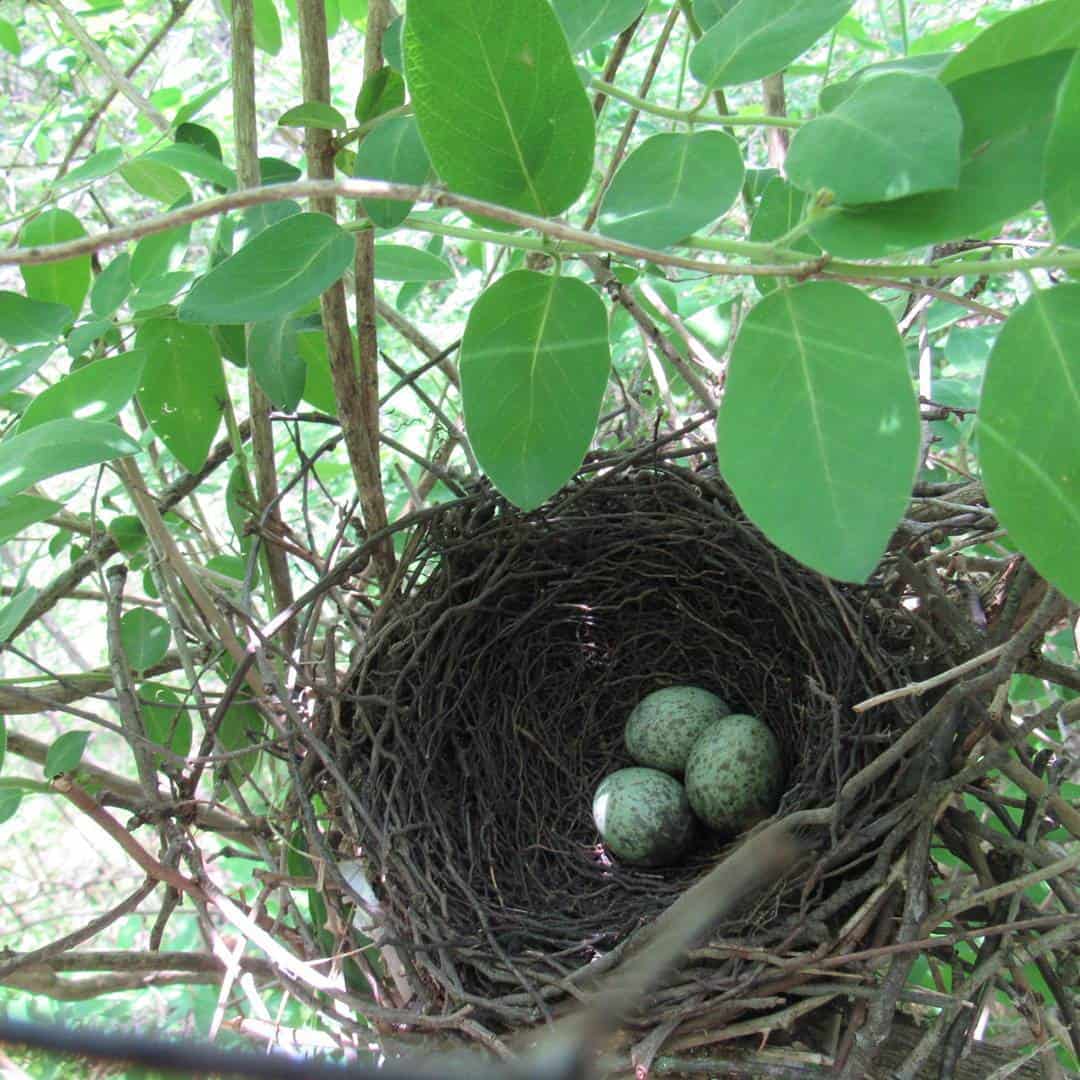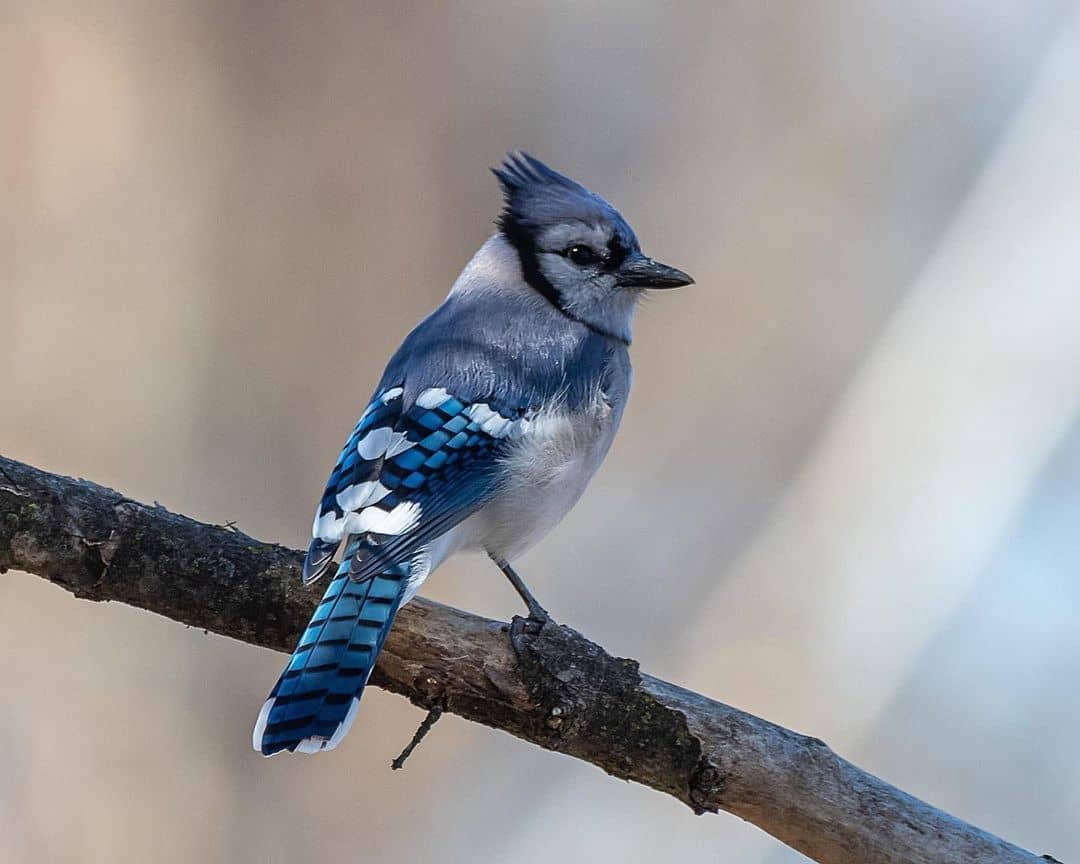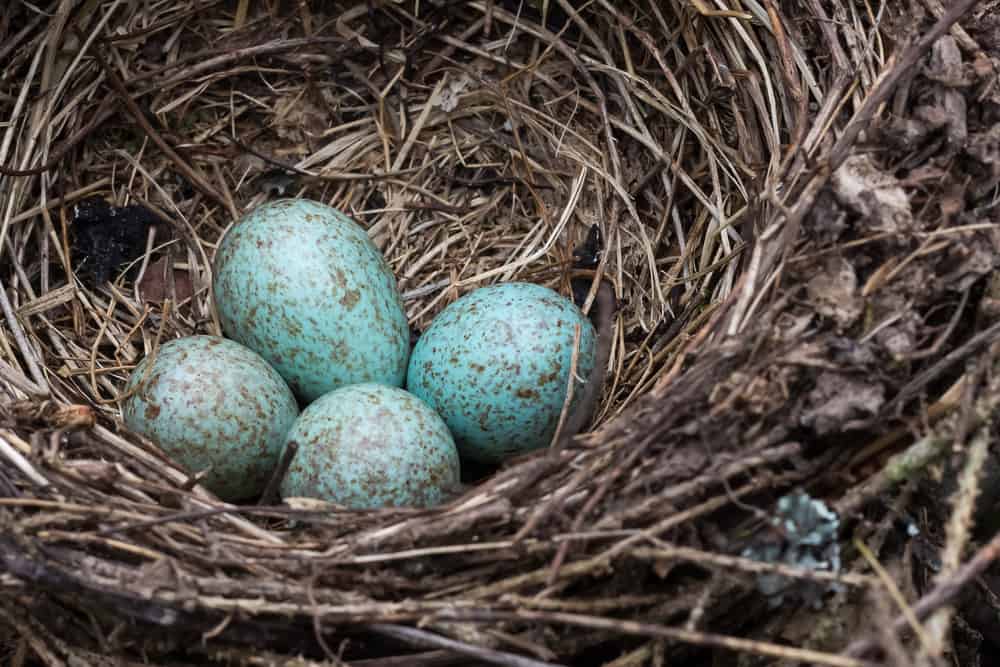Blue Jays are highly intelligent, curious, and social birds who are commonly found throughout the North and Central United States. You can find these bluebirds nesting on the beech and oak trees.
Sometimes, blue jays will also build a nest in your garden or backyard. If you suspect blue jays breeding on your property, you may want to identify them as soon as possible. (After all, these birds are considered good omens!)
So, what does a blue jays egg look like? In today’s post, we will discuss this query in great detail. Let’s get started!
What Does a Blue Jay Egg Look Like?
Blue jay eggs are small, narrow, and blue. They are around 1 to 1.3 inches long and 0.7 to 0.9 inches wide. Imagine them as mini versions of chicken eggs in light blue color.
However, some blue jay eggs are yellowish-brown or light green in color. In that case, you will identify them with the small, dark-colored spots.
It doesn’t matter whether the egg is blue, green, or yellowish-brown. It will always have dark spots of the same color. For example, a light blue egg will have dark blue spots and a light green egg will have dark green spots.
In each blue jay nest, you will find anywhere from 3 to 7 eggs. The most common numbers are 4 and 5.
What Does a Male Blue Jay Egg Look Like?

If you’re wondering about the difference between male and female blue jay eggs, then it is not possible to identify them before hatching. Male and female blue jays are incredibly alike, with no distinct physical features.
Most bird watchers identify them by observing their behaviors. Female blue jays tend to select their male partners in the mating season (mid-March to July).
The blue jay gathers in groups of 3 and 10, with the female in the lead. One by one, the males will bob their heads up and down to impress the female. If the female doesn’t select anyone, she will take a flight, and the others will follow her.
Once she lands somewhere, the process will repeat until she chooses someone. Alternatively, if a male doesn’t want to pursue the female anymore, he will bow his head down in a submissive pose and fly away.
Another behavior pattern that differentiates a female blue jay from a male is the egg incubation period. Usually, the female sits on the egg while the male finds food.
Where Do Blue Jays Lay Their Eggs?
Blue jays lay their eggs in nests like all other birds. However, their preferences for building a nest are specific and unique.
Most blue jays choose evergreen or deciduous trees to build their nests. These trees are usually tall, with plenty of leaves and greenery to hide the nests from possible predators. Blue jays further ensure safety by building the nest around 8 to 30 feet above the ground.
These birds are very protective of their little ones. So, don’t be surprised if you find some nesting almost 50 feet above the ground!
With that said, a blue jay’s nest resembles the shape of an open cup. It is 7 to 8 inches wide and located in the crooks of trees (the point where the branch connects with the trunk). The majority of the nest is built from roots, twigs, moss, bark, and grass.
Some nests have mud reinforcements. Although this is rare, blue jays may use mud to strengthen the structure when the nest is either too high or too old. Mud increases the lifespan of the nest and delays the need for creating a new one.
A female blue jay typically builds the nest while the male collects the construction materials. He may assist the female if needed. The overall process is quiet yet quick. You won’t even know if blue jays have been breeding and nesting on your property.
Do Blue Jays Lay Eggs in Other Birds’ Nests?

Blue jays can plunder other nests and eat the nestlings or eggs. But, it is very rare for a blue jay to engage in such nesting habits. In a detailed study about blue jays, only 1 percent of these bluebirds had other eggs or hatchlings in their stomachs.
They will usually eat insects, nuts, berries, and acorns. So, there are chances of blue jays laying eggs in other birds’ nests. They will avoid doing so even when the nest is abandoned.
Usually, blue jays create a new nest every mating season. However, if their old nest is still intact and they are unable to build a new one, blue jays will reuse their old nest. They may also continue using the same nest if it is in a safe and convenient place.
Before laying eggs, blue jays will clean the old nest and remodel it. This ensures the nest is free of mites and strong enough to hold the brood.
How Many Times a Year Do Blue Jay Lay Eggs?
The number of times a blue jay will lay eggs depends on the nesting place. In the North, blue jays only raise one brood per year. This also means that they will select their partners (courtship) and mate them annually.
Comparatively, blue jays will raise up to two broods each year in the south. However, the mating season for all blue jays is between mid-March to July. They will not engage in reproduction before or after these months.
When the bird eggs are laid, it will take around 17 to 18 days for them to hatch. The mother blue jay will sit on the eggs and incubate them throughout this period. Meanwhile, the father will guard the nest and hunt for food.
The mother may leave the eggs after the initial 12 to 14 days for stretching her wings or taking a bath. So, as a substitute, the father will keep the eggs warm. The eggs will hatch into naked hatchlings with closed eyes.
Interesting Facts About Blue Jays

1. Blue jays are monogamous birds
Monogamy refers to mating with one individual only. Unlike most birds, blue jays mate with one partner for the rest of their lives. What’s more, blue jays continue to present their partners with gift offerings.
So, they don’t only stay with one blue jay but also actively participate in strengthening their bond. This monogamous relationship reflects the high-value qualities of commitment and devotion in blue jays.
2. Blue jays eat chipped paint
It may sound weird, but blue jays are often found chipping at house paint and storing it in their nests. Their obsession with chipped paint confuses many bird watchers. However, that’s because the chips serve as a calcium source.
Plus, it is abundantly available in human settlements. Blue jays take advantage of this opportunity and stockpile the calcium for the winter. If you find a blue jay chipping off the house paint, just offer it a cup of eggshells.
3. Blue jays are good at mimicking
Blue jays are social birds with excellent communication skills. They often produce a loud jeer or sing a whisper song to talk to other blue jays. But these bluebirds can also mimic just about any sound.
If a predator hawk is nearby or attacking, a blue jay will recreate the cries of a hawk to warn other blue jays. Similarly, a blue jay may mimic the sounds of other animals to scare other blue jays or enemies from its territory.
4. Blue jays will rub ants on their feathers before eating
Blue jays often practice a feeding habit called anting. In this, a blue jay will catch ants from the surroundings and rub them against the feathers before eating. The rubbing drains the formic acid of the ants.
Several researchers have proposed different theories for this strange blue jay behavior. Some believe that blue jays rub formic acid on their feathers to get rid of germs, while others believe they do it to enhance the taste.
In one study, blue jays were exposed to two types of ants; with and without formic acid. It was noted that blue jays didn’t rub the ants without formic acid before consuming. This suggests that the latter theory is true.
5. Blue jays are actually brown
Blue jays have melanin in their feathers, which is a brown pigment. But we see them blue because the feather structure of blue jays refracts only blue light. So, when sunlight hits their feathers, all wavelengths of visible light get absorbed by the melanin pigment (except for the blue one).
Last Words
To sum up, a blue jay egg is small and blue with dark colored spots. It may also be green or yellowish-brown in color. Whatever the color is, you will always find dark-colored spots of the same color on the eggshell.
There will also be around 3 to 7 blue jay eggs in one nest. If you find less or more than this, the nest doesn’t belong to a blue jay. It may belong to common blackbirds, American robins, or even starling birds.
What other colored eggs have you found in your backyard? Let us know in the comments below!
